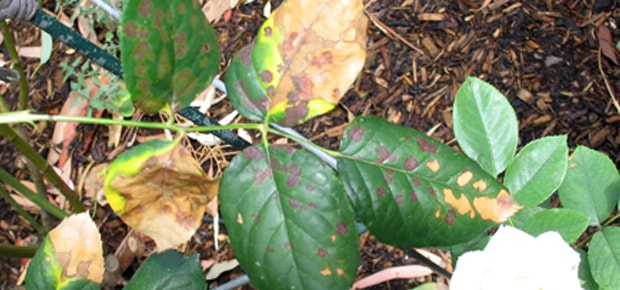Pests And Diseases
Aphids
Aphids are small green-brown sap sucking insects on the growing shoots. Small numbers can be hosed off with a water jet. Natural predators are ladybirds, hoverflies, parasitic wasp and birds. If in plague proportions, spray with ‘Eco Oil’, ‘Pest Oil’ or soapy water. Using insecticide will kill the predators also.
Spider Mite
These thrive in hot, dry, dusty conditions along paving, paths, gravel or reflective heat from fences or walls. They are the tiniest mites found on underside of leaves which cause them to become dry and dusty, often causing the leaves to drop. A fine dusty web can be seen among the branches in a severe infestation. A simple remedy is to hose water through the foliage, particularly the underside of leaves. Do this each morning for 3 or 4 days to change the dry conditions. Mulch under the bushes and wet this also. ‘Pest oil’ or ‘Eco Oil’ sprayed to wet the underside of the leaves is also effective. If it is a severe infestation a miticide spray may be needed.
Caterpillars
Caterpillars are not a large problem, but if the leaves or flowers are chewed a safe spray to use is ‘Success’ or ‘Dipel’ – made from naturally occuring bacteria which only kills caterpillars after ingestion.
Fungal problems
Mildew is a white powdery substance on the rose leaves or on the tips of shoots. More prevalent when the weather is warm and moisture is present. Control with milk spray once a week – one part milk to 10 parts water. ‘Wettable Sulphur’ products and ‘Pest Oil’ can be used as preventative sprays.
Blackspot on leaves, which turn yellow and drop off, and Rust, rusty pustules or powder on the underside of leaves are other fungal problems. All are a result of high humidity in early spring and late autumn. Milk spray, ‘EcoRose’ fungicide or soapy water may help. For long term prevention spray with ‘Mancozeb Plus’ and/or ‘Trioforine’ (only use this spray 2 or 3 times a year)
To download “Advice on Pests and Diseases” brochure click here


